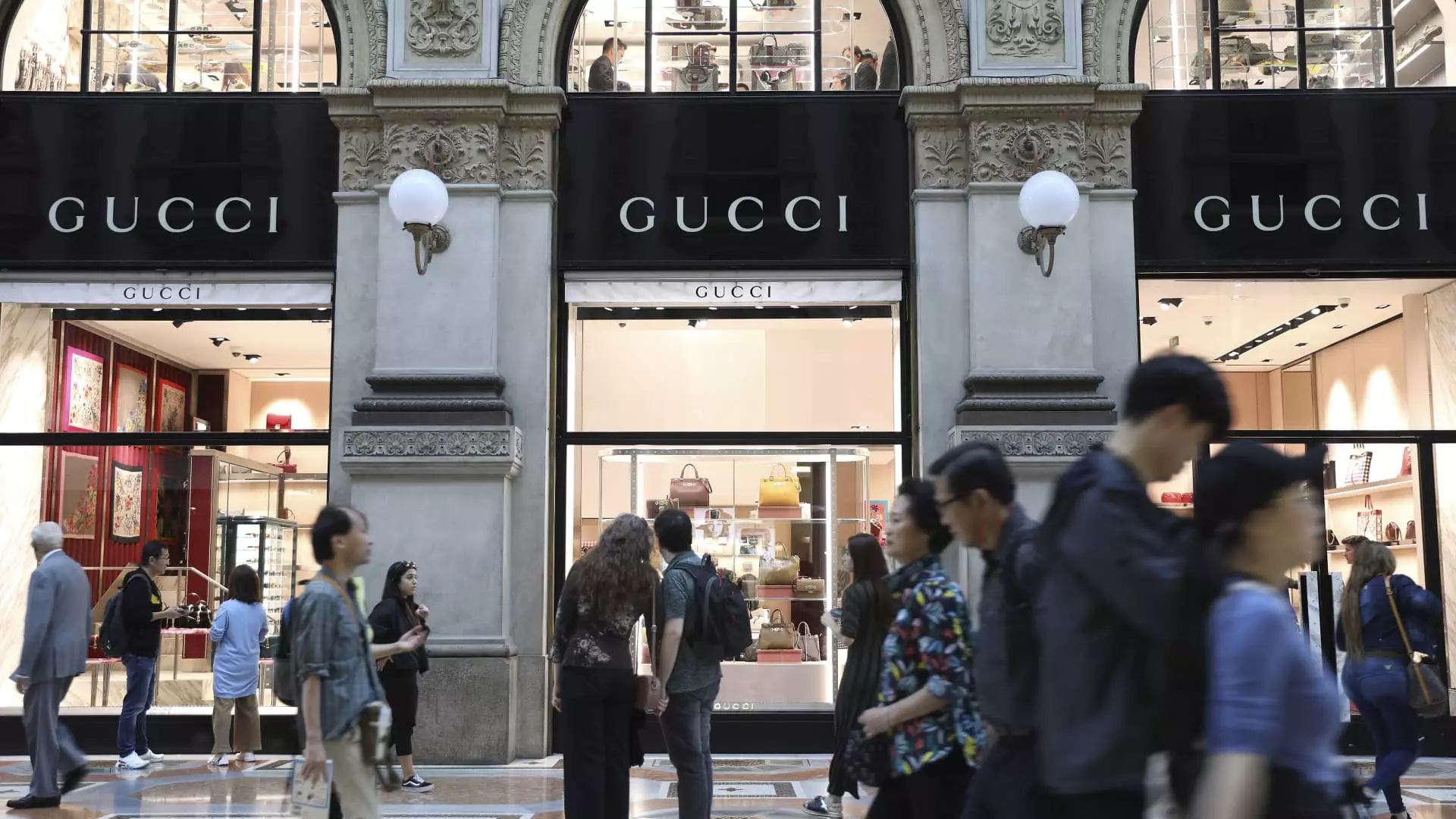In recent months, the luxury sector in Europe has begun to show signs of recovery after a notably challenging period that has defined 2024. As companies release earnings reports reflecting a more positive outlook, industry experts debate the sustainability and implications of this growth. Many luxury brands are grappling with steep hurdles, including persistent sluggishness in the Chinese market and the potential impact of U.S. tariffs. This turbulent backdrop poses significant questions about the future of luxury goods and how brands adapt to a shifting economic landscape.
The luxury sector’s recent earnings season has been met with cautious optimism. Companies like Hermès have reported impressive fourth-quarter sales, seemingly marking a turnaround after what analysts deem one of the worst years for the industry. Portfolio managers, such as Simone Ragazzi of Algebris Investments, suggest that the third quarter of 2024 was the inflection point, potentially ushering in a period of normalization that could continue up until 2025’s latter half. The upbeat performance by legacy brands, including LVMH and Kering, further supports the theory that the sector could be rebounding.
However, while signs of recovery are present, analysts express caution. Although companies have exceeded expectations recently, the underlying issues remain pervasive, especially the faltering demand from China, which has traditionally been a cornerstone for luxury sales. The fluctuating performance of key markets underscores the need for brands to reevaluate their strategies and adapt to the evolving landscape of luxury consumption.
The Chinese luxury market has long been considered a vital engine for growth within the luxury sector. Unfortunately, ongoing weaknesses in consumer spending in the region continue to raise alarms. Both L’Oréal and Kering’s Gucci have recently indicated declining sales in China, reflecting a broader trend in the luxury market that cannot be ignored. This decline has prompted discussions about the health of consumer sentiment around luxury in China, suggesting that external economic factors are intrinsically linked to market performance.
Concerns about potential U.S. tariffs further darken the horizon, with analysts like Zuzanna Pusz from UBS warning that if duties were implemented, brands might need to raise prices. Such adjustments could lead to increased consumer selectivity and pave the way for more significant market disparities, favoring premium brands that manage to retain customer loyalty amidst economic upheaval.
The possibility of U.S. tariffs on European luxury goods poses a complex dilemma for companies in this sector. It’s been indicated that brands with established operations in Europe may not be entirely subject to the brunt of import charges owing to the nature of luxury manufacturing, which often emphasizes local craftsmanship. Nevertheless, the imposition of tariffs may still have indirect effects by straining the economies of major markets like China and raising overall prices.
Ragazzi’s insights underscore the potential pain points for luxury brands if tariffs come into play, suggesting that passing those costs on to consumers could prove difficult, especially in an environment where consumers are already exercising restraint. As brands navigate these potential pitfalls, they will need to be agile in their approach to pricing and product positioning.
The luxury consumer has evolved; today, individuals are more discerning in their purchases. As Carole Madjo of Barclays points out, the landscape has shifted to an emphasis on “buying better” rather than just buying more. This preference for quality over quantity forces brands to justify their pricing strategies and innovate to remain relevant within a highly competitive market.
Many luxury brands that have ignored the need for innovation may find themselves at a disadvantage. As consumer preferences continue to gravitate towards brands that align with their values—particularly in terms of sustainability and quality—brands must rise to the challenge. The call for real innovation and an engaging consumer experience has never been more pertinent.
Looking forward, analysts suggest that higher-quality brands that appeal to affluent consumers will likely emerge as winners in an uncertain economic climate. Luxury firms like Richemont and Hermès have already shown resilience and the ability to adapt to market demands. Meanwhile, brands that can successfully innovate while maintaining their exclusivity may capture the hearts—and wallets—of modern consumers.
It remains clear that while 2024 brought adversity, it also presented an opportunity for brands to reassess their identity and mission within the luxury sector. As the market continues to recover, the dialogue around what makes a luxury brand will only deepen, pushing firms to reflect on their long-term sustainability and consumer connection.
The luxury industry’s recovery is marked by a blend of optimism and caution. Brands must navigate pitfalls while being keenly aware of changing consumer behaviors and global economic pressures. By positioning themselves thoughtfully, they could emerge stronger amid the turbulence, solidifying their place in the evolving narrative surrounding luxury.

